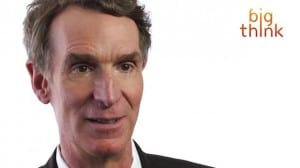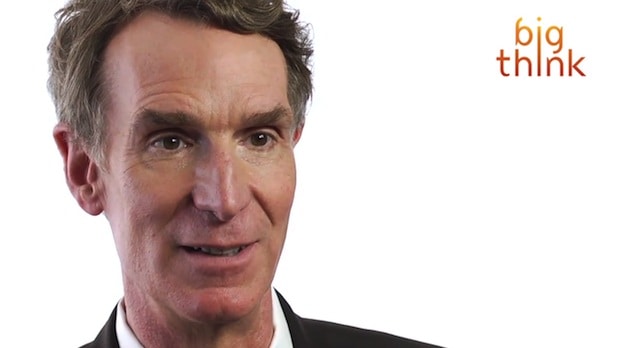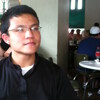Until middle school, I watched Bill Nye the Science Guy religiously on PBS Kids. I recall vividly the episode when he placed a piece of sodium into water. It swirled and danced around the beaker before bursting into flames. I was amazed, ‘stoked’ even. Nye’s youthful enthusiasm for the mechanics of the universe was infectious–at some point he even inspired me to become a mad scientist.
Recently I came across this video, in which an older and more serious Bill Nye pleads with adults to stop teaching creationism to children.
Apparently for Nye, when you believe in a Creator and deny evolution, “your world view just becomes crazy, just untenable, itself inconsistent.” And as for creationism, “There’s no evidence for it.”
Listening to Nye say “bye” to creationism as a whole disappointed me. I hoped my childhood hero would be more open-minded about this issue, or at least get the facts right. Many Christians (this one included) don’t believe that the story of creation in Genesis is opposed to evolution. Indeed Stanley L. Jaki, the late Benedictine monk and physicist, argued that science as we know it today had its origin in the Judeo-Christian narratives of Creation and Redemption. Personally, faith imparted through stories (not mere apologetics) of a loving Creator never diminished the magic of science for me–not as a child and not now.
Similarly, in a promo video for his book The Magic of Reality (2011), Richard Dawkins argues that, “the scientific truth of what actually is out

Science Guy sez: no creationism for you!
there” is more exhilarating than any myth or story. The world renowned atheist (who, when pushed, admits he’s really agnostic) asks viewers why seeing the sun as “a huge ball of gas” is more magical than seeing it as “some imaginary chariot flying across the sky.”
While Nye and Dawkins may discount the power of ancient stories to convey truth beyond the literal account of creation, their intention to preserve children’s excitement and wonder at the universe is nevertheless commendable. But science is one source of wonder among many others.
But is replacing meaningful and meaning-filled stories with hard facts and data the only way to preserve wonder, the mother of creativity and innovation?
Last year, Rachael Rettner from livescience.com reported that creativity among children appeared to be in decline. This was due to trends in U.S. education that emphasized standardized testing more than development of the imagination (for example, through “story-making”).
Similarly, Maggie Koerth-Baker writes in “The Mind of a Flip-Flopper”:
People change their minds all the time, even about very important matters. It’s just hard to do when the stakes are high. That’s why marshaling data and making rational arguments won’t work. Whether you’re changing your own mind or someone else’s, the key is emotional, persuasive storytelling.
When it comes to wonder for this world and beyond, we do not live on facts alone. We need stories too. While life sciences open our eyes to how life works, the art of story fills the imagination with endless possibilities for the art of living. In other words, the stories of faith give purpose to our faith in facts.
What about you? Where have different sources of wonder such as story and scientific fact intersected in your life? How do you hold on to a sense of childlike wonder?


